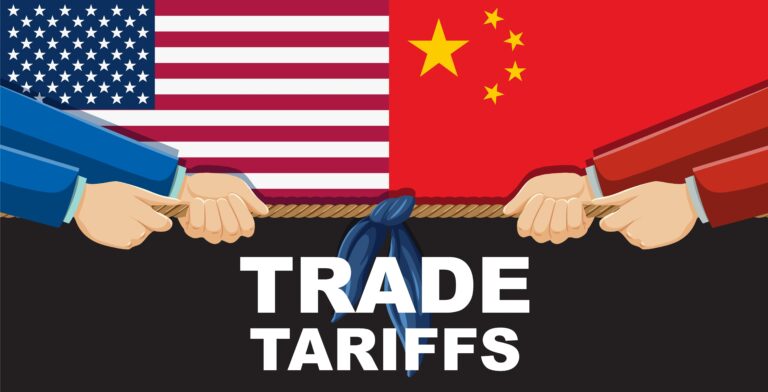As escalating tariffs continue to reshape the landscape of global trade with China, entrepreneurs in emerging markets are finding new avenues for growth. Among them is a Tanzanian business leader who views these shifting economic currents not as obstacles, but as openings to expand trade and investment opportunities. This article explores how changing tariff policies are influencing China’s trade dynamics and spotlighting unexpected beneficiaries beyond traditional Western markets.
Tariffs Disrupt China’s Export Landscape Creating New Trade Pathways
China’s export markets are undergoing a significant transformation as new tariff measures imposed by major economies force manufacturers to recalibrate their strategies. Traditional supply chains from coastal manufacturing hubs are diverting toward emerging markets and alternative destinations. Companies are increasingly exploring diversification in trade partnerships, seeking to minimize risks associated with geopolitical tensions and trade barriers. This shift opens doors for countries like Tanzania, which, leveraging strategic location and regional trade agreements, is fast becoming a conduit for redirected goods and investments.
Industry analysts highlight several key dynamics reshaping the landscape:
- Increased regional collaborations within Africa and Southeast Asia, enhancing intra-continental trade flows.
- Development of new transport corridors that bypass traditional maritime routes affected by tariffs.
- Enhanced role for smaller economies as hubs for assembly, re-export, and value-added services.
| Factor | Impact | Examples |
|---|---|---|
| Tariff barriers | Increase production costs, reduce China exports to traditional partners | US, EU |
| Trade diversification | New routes, emerging market access | Tanzania, Vietnam |
| Regional trade blocs | Streamlined customs, reduced tariffs within regions | AfCFTA, ASEAN |
A Tanzanian Entrepreneur Leverages Shifts to Boost Regional Commerce
In the wake of rising tariffs disrupting traditional trade channels with China, a Tanzanian entrepreneur has tactically repositioned his business to capitalize on emerging opportunities within East Africa. By redirecting supply chains and fostering new partnerships across the region, he is not only safeguarding his enterprise from international pressures but also stimulating local markets that had remained underutilized. This strategic pivot has led to increased intra-African trade, leveraging customs unions and regional trade agreements to bypass costly external tariffs.
Key factors driving this shift include:
- Enhanced regional cooperation through the East African Community (EAC)
- Development of localized manufacturing hubs to reduce dependency on imports
- Investment in transport infrastructure to streamline logistics
| Impact Area | Benefit | Timeline |
|---|---|---|
| Supply Chain Adaptation | Reduced costs by 15% | 12 months |
| Regional Partnerships | Expanded market reach by 25% | 18 months |
| Logistics Improvements | Shortened delivery times by 20% | 6 months |
Strategies for Navigating Changing Trade Policies in Emerging Markets
In the face of fluctuating tariffs and evolving regulatory landscapes, businesses operating within emerging markets must adopt an agile approach to sustain growth. For Tanzanian entrepreneurs tapping into new trade routes influenced by China’s shifting policies, diversification is paramount. Expanding supply chains beyond traditional markets allows companies to mitigate risks associated with sudden policy changes. Additionally, maintaining close communication with local trade authorities and investing in real-time market intelligence tools provide critical advantages in anticipating policy shifts and responding proactively.
Strategic partnerships also play a crucial role in navigating this complex environment. Collaborating with regional players who have a nuanced understanding of grassroots trade dynamics can open doors to alternative markets and streamlined operations. Moreover, leveraging digital platforms to enhance transparency and compliance ensures smoother transactions despite evolving tariff structures. The following table summarizes key strategies that emerging market players are implementing to stay competitive amid these trade transformations:
| Strategy | Benefit |
|---|---|
| Supply Chain Diversification | Risk reduction and new market access |
| Real-Time Market Intelligence | Proactive policy adaptation |
| Regional Partnerships | Local expertise and operational efficiency |
| Digital Compliance Tools | Increased transparency and smoother transactions |
In Conclusion
As China’s trade landscape continues to shift under the pressure of escalating tariffs, countries like Tanzania are positioning themselves to capitalize on emerging opportunities. By navigating new supply chains and expanding exports, Tanzanian businesses exemplify how global trade tensions can spur economic realignment and growth beyond traditional centers. While challenges remain, the evolving dynamics underscore a broader transformation in international commerce-one that is redefining partnerships and opening doors for nations eager to broaden their global footprint.




